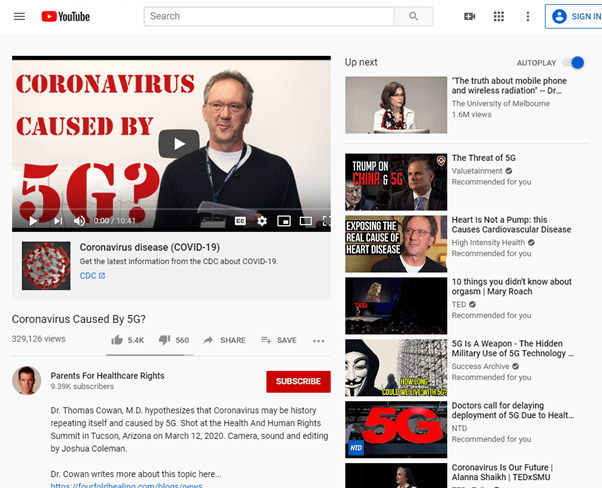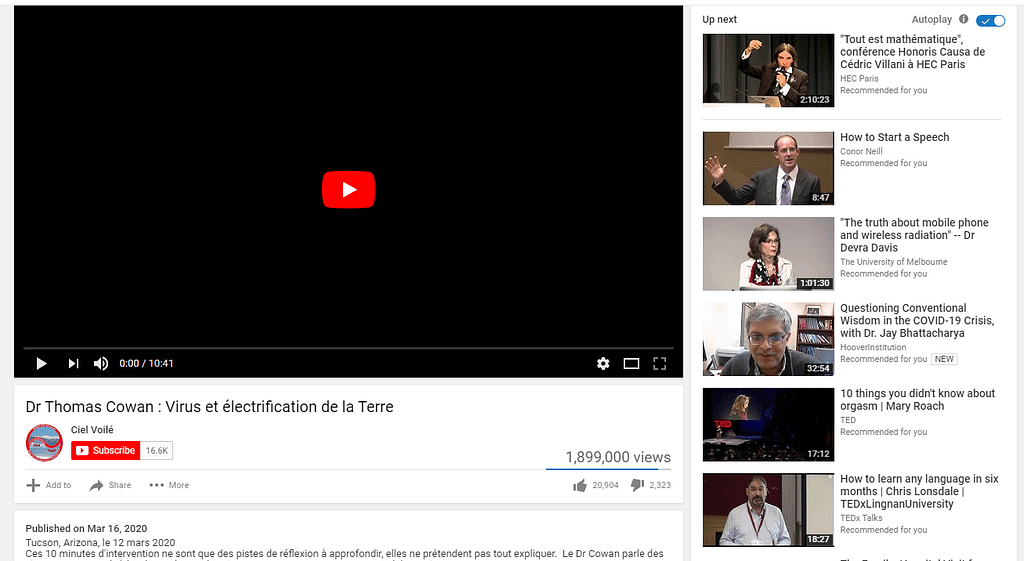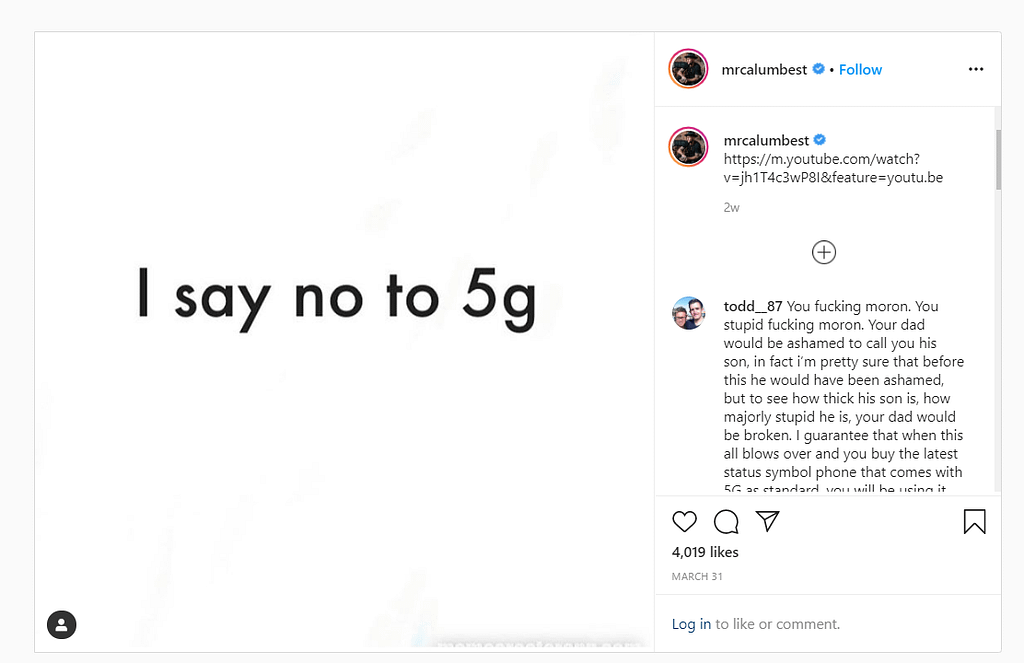COVID-19 and 5G: A case study of platforms’ content moderation of conspiracy theories
by Alexandre Alaphilippe
For a few weeks now, conspiracy theories around 5G and Coronavirus have been flooding the web, leading to real-life incidents with acts of vandalism on cell towers in the UK. Despite being strongly refuted by scientists, these theories range from the claim that 5G alters people’s immune system to the idea that 5G changes people’s DNA, thus making people more susceptible to contracting COVID-19.
We traced back the diffusion and content moderation timeline of a conspiracy video across several social media platforms. The velocity of such content is alarming. Before its removal, the content had been viewed over a million times and shared hundreds of thousands of times.
“Most conspiracies stay online, but this is having real-world impact,” said EU DisinfoLab’s Alexandre Alaphilippe to the New York Times. Indeed, from this observation, we conclude that the moderation process of the debunked conspiratorial content has been slow and inconsistent across platforms and functions, from mobile to the desktop version, as well as for sharing content from one platform to another.
Facts and timeline
12 March
The video in question was of an alleged Dr. Thomas Cowan who – in detail – explains how 5G has supposedly caused COVID-19. This video was posted on YouTube by the channel “Parents for healthcare rights”. The first archived page of the video dated 12 March had 320K views. When consulted later on the 7 April, the video had 650K views.

16 March, 22:16 UTC
Another occurrence of this 5G and Coronavirus conspiracy YouTube video was published on “Ciel Voilé”, a French Conspiracy channel, on the 16 March. When we consulted the video two weeks later, it had 1.89 million views.

Perma link here.
18 March, 18:17 UTC
On 18 March, the British TV celebrity Calum Best first posts the “French” YouTube video on his Facebook page.
Perma link here.
18 March
On the same date, the original video was fact-checked by LeadStories.
23 March
On 23 March, Radio Canada also fact-checked different occurrences of the video, pointing out that multiple celebrities have published different versions.
31 March 2020, 9:56 UTC
Two weeks later, Calum Best posts a picture on Instagram “I say no to 5G” with a link to the YouTube video as a comment.

Perma link here.
31 March, between 9:51-10:56 UTC
From looking at the Twitter replies to Calum Best’s account, it is probable that Calum Best had tweeted about the theory but the tweet was deleted soon after.

2 April
5G Antennas are set on fire amid 5G and COVID-19 claims.
3 April
Broadband engineers are threatened in the wake of the 5G and COVID-19 claims.
6 April
YouTube announced that it would remove videos suggesting a link between 5G and COVID-19.
8 April
Using a private Facebook profile with no friends and restraining the visibility of posts to “Only Me”, we tested the effectiveness of the platforms’ policies against COVID-19 disinformation on 8 April, and we observed the following:
YouTube: The videos were still online at noon. When trying to post the video on Facebook by using the share button, no warning window popped up. When consulted at 15:35 UTC, both videos had been deleted.

Instagram: There was no disinformation label on the Instagram post. When posting on Facebook, no warning appeared for the Instagram link that had the YouTube link as a description.
Facebook: On the original Facebook post and other posts, the information had been labeled as fake.

However, it was possible to post the video but a warning window popped-out with suggested fact-checkers.

Surprisingly, some Facebook posts with the link are not labeled as fake. It was even possible to post the mobile version of the video without a pop-up warning.

This short case-study provides an insight into how effectively the online platforms’ are enforcing their policies on COVID-19 mis– and disinformation. In case you wish to know more about this, check out our dedicated blog post on platforms’ responses to the COVID-19 infodemic.


